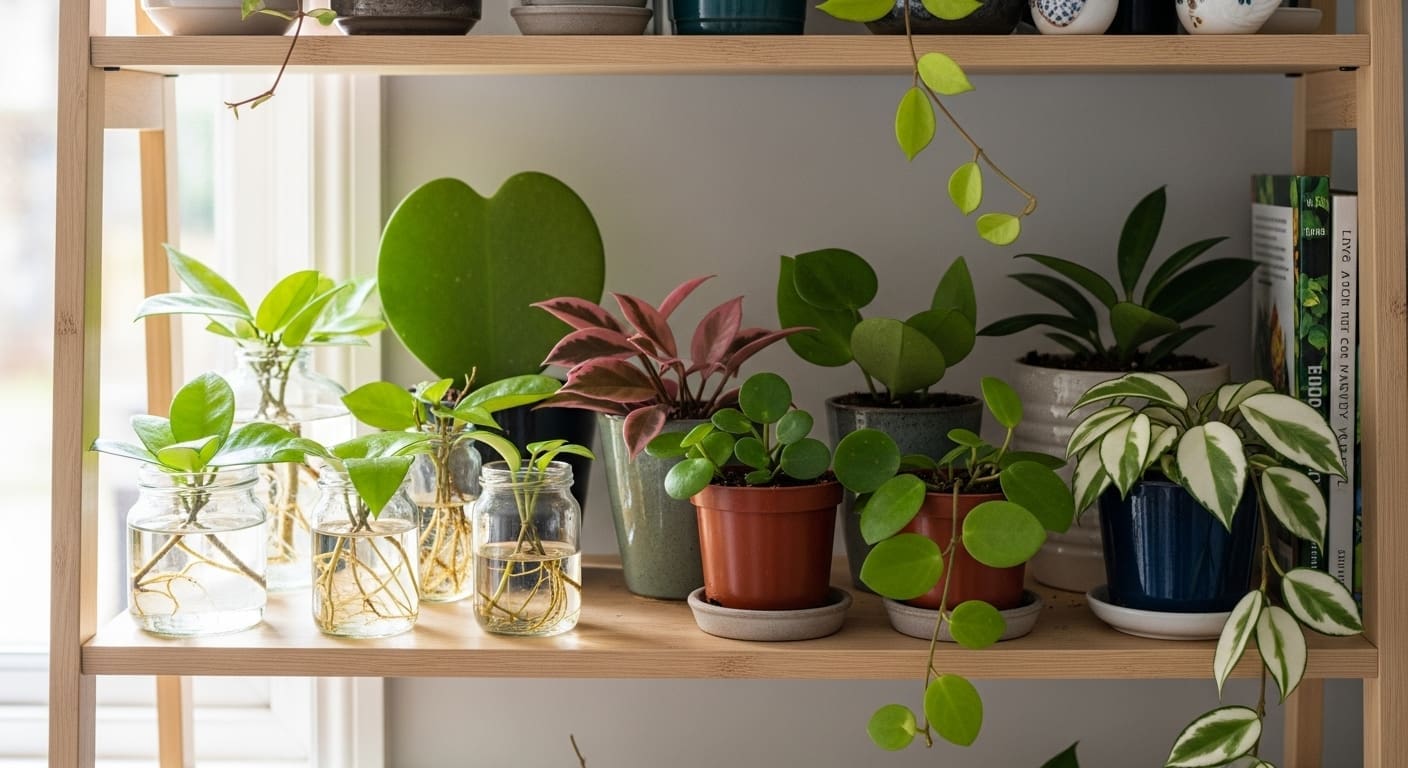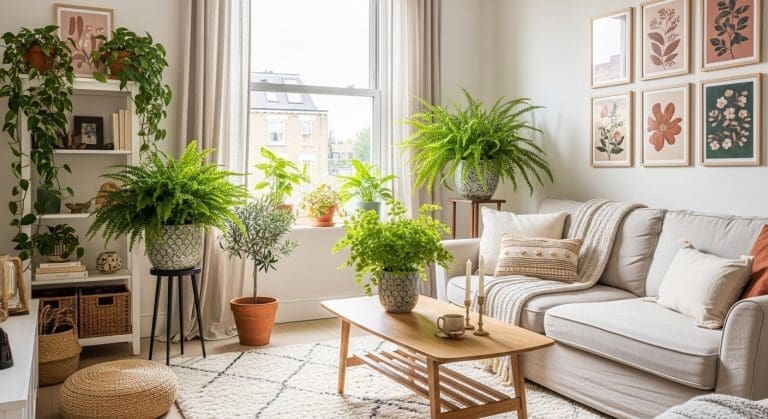Hoya plants — often called wax plants for their thick, glossy leaves — are beloved by collectors for their unique foliage and stunning, fragrant blooms. But when it comes to rare Hoya varieties, such as Hoya polyneura or Hoya sigillatis, the stakes feel higher. These aren’t just your everyday houseplants; they’re investment pieces in your collection. And learning how to propagate them successfully means you can grow your own backups, share with friends, or even trade with other collectors.
If you’ve ever thought, “What if my rare Hoya dies — would I lose it forever?”, propagation is your answer.
Understanding the Basics of Hoya Propagation
Propagation simply means creating new plants from an existing one. With Hoyas, there are three common methods:
- Stem cuttings in water
- Stem cuttings in soil or aroid mix
- Leaf and node cuttings in sphagnum moss
Each method has pros and cons, and the best choice often depends on your home environment. In the UK, where humidity can be tricky in winter, moss or water methods often work well. In warmer US states, soil propagation might be the fastest route.
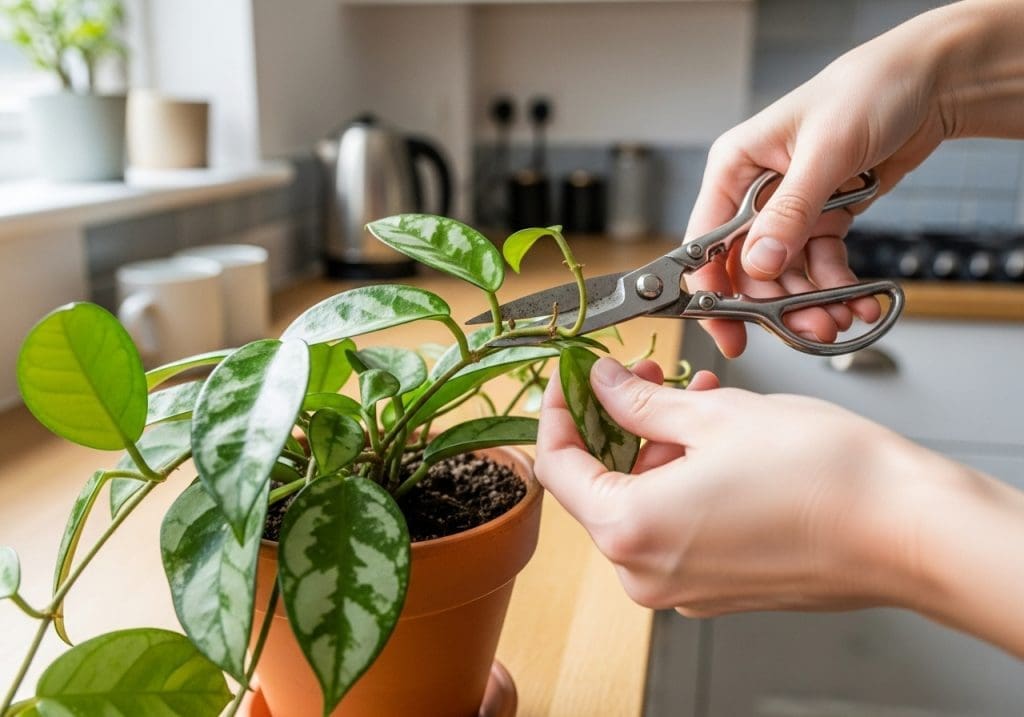
Step-by-Step: Propagating in Water
Water propagation is one of the most satisfying methods — you can watch the roots develop in real time.
What you need:
- A clean jar or glass
- Filtered or distilled water
- Sharp, sterilised pruning shears
Steps:
- Choose a healthy stem with at least 2–3 leaves and one visible node (the bump on the stem where roots will form).
- Cut just below the node using clean shears.
- Place the cutting in water, ensuring the node is submerged but the leaves stay above water.
- Change the water weekly to prevent bacteria buildup.
- Once roots are about 2–3 inches long, transfer to soil.
Tip: Rare Hoyas are slower to root than common varieties, so patience is key.
Propagating in Soil
Soil propagation is less fuss once set up, and plants don’t have to adapt from water to soil later.
In the UK, use a well-draining aroid mix to avoid soggy conditions. In the US, especially in hot, humid climates, you may need to water more often to keep the medium lightly moist.
Ideal soil mix for Hoyas:
- 40% peat-free compost or coco coir
- 30% orchid bark
- 20% perlite
- 10% horticultural charcoal
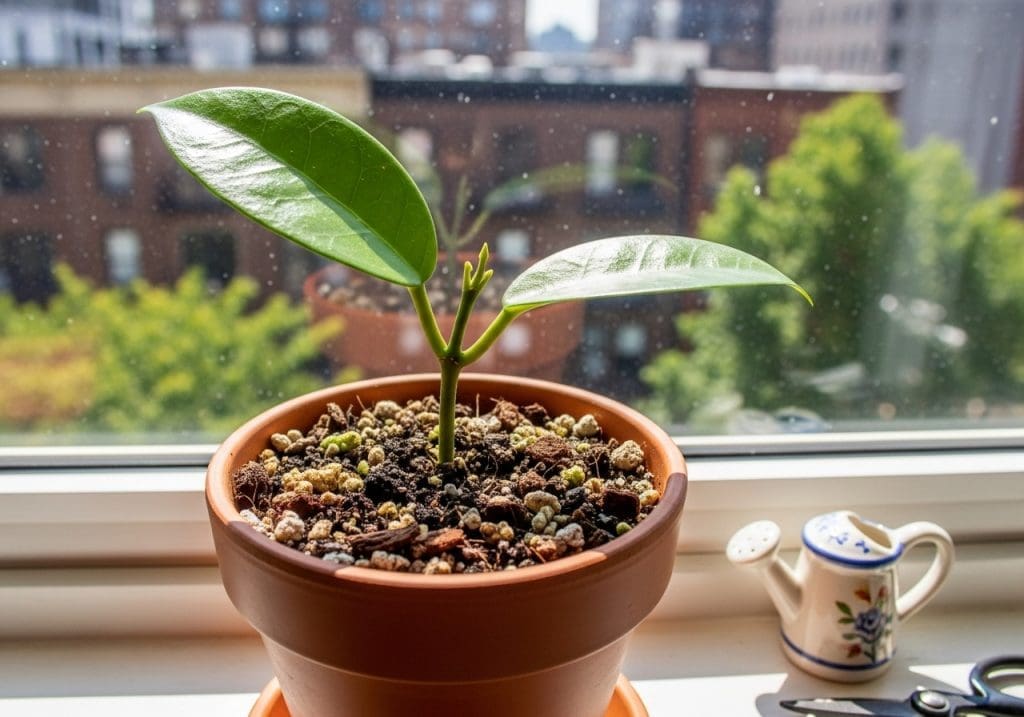
Using Sphagnum Moss
This method is especially good for rare Hoyas that you want to root quickly but gently.
- Soak sphagnum moss in water, then squeeze out excess moisture.
- Wrap the node of your cutting in moss and secure it with twine or plant ties.
- Place the wrapped cutting in a small container or propagation box with high humidity.
“Last winter, I tried rooting a delicate Hoya polyneura cutting in moss inside a clear storage box. Within four weeks, it had strong roots — far faster than I’d seen with water or soil.”
Light, Temperature & Humidity for Successful Propagation
Regardless of method, bright, indirect light is essential. Direct sun can scorch tender cuttings, but low light will slow root development.
- UK homes: South- or west-facing windows with sheer curtains are ideal.
- US homes: In sunny states, move cuttings back from intense afternoon sun; in northern states, supplement with a small grow light.
Hoyas root best at 20–27°C (68–80°F) and in 60–80% humidity. In drier homes, use a humidity dome or keep cuttings in a clear box to create a mini greenhouse effect.
In drier homes, use a humidity dome or keep cuttings in a clear box to create a mini greenhouse effect. For more tips on adjusting humidity, water, and light throughout the year, see our Seasonal Care for Ferns guide.
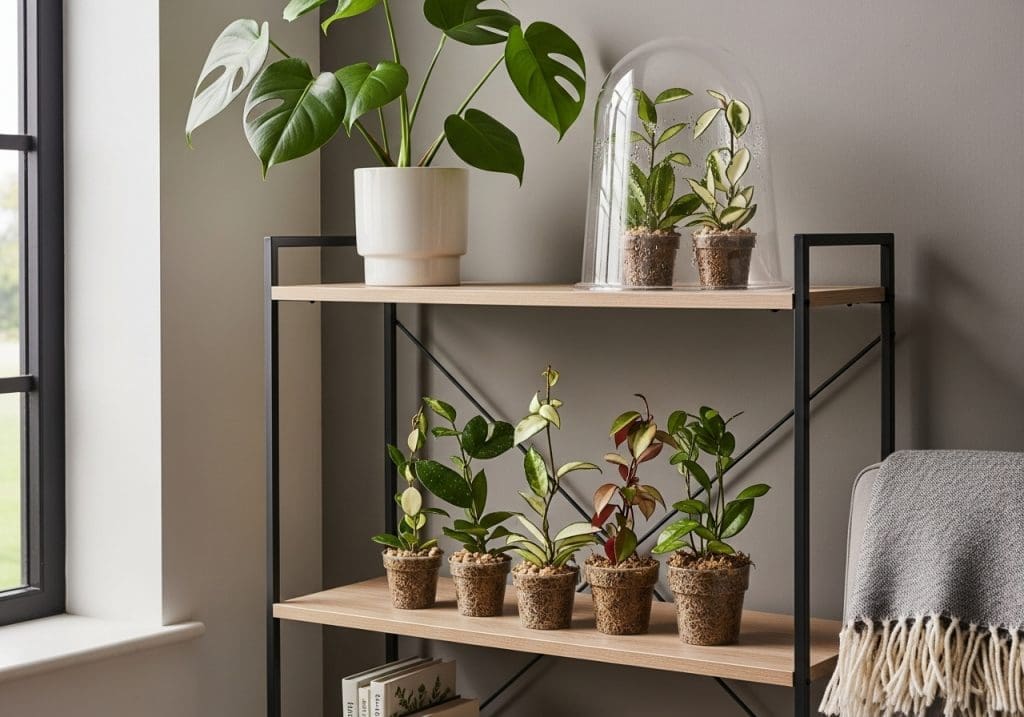
Common Mistakes to Avoid
Even experienced collectors make these propagation mistakes:
- Overwatering in soil → Leads to rot before roots form.
- Cutting too far from the node → Roots won’t develop.
- Low humidity → Causes leaves to wrinkle and cuttings to dry out.
Ask yourself: Am I giving my cuttings the same stable, warm, bright environment they’d have in the wild?
Expert Insight
“When it comes to rare Hoyas, patience is your greatest tool. They may take weeks longer than common varieties, but the success rate is much higher when you resist the urge to check or disturb them too often,” says Sarah Bennett, curator at the US Botanic Garden.
For more on Hoya care and growth habits, see the Royal Horticultural Society’s guidance on tropical houseplants (source).
Personal Reflection: The Joy of Sharing
“I’ll never forget the first time I rooted a rare Hoya and gave it to a friend. It felt like sharing a little piece of my own collection, knowing it might bloom in her home one day.”
Propagation isn’t just practical — it’s a way to connect with other plant lovers. In both the UK and US, Hoya cuttings are often traded in online plant groups or local plant swaps, which is how many collectors discover new varieties.
Aftercare: Moving from Cutting to Mature Plant
Once your cutting has a healthy root system, it’s time to pot it up and care for it like a mature Hoya:
- Light: Bright, indirect light for best growth and future blooms.
- Water: Let the top inch of soil dry before watering.
- Feeding: Use a balanced liquid fertiliser during the growing season.
Transition slowly — sudden changes in environment can shock the plant.
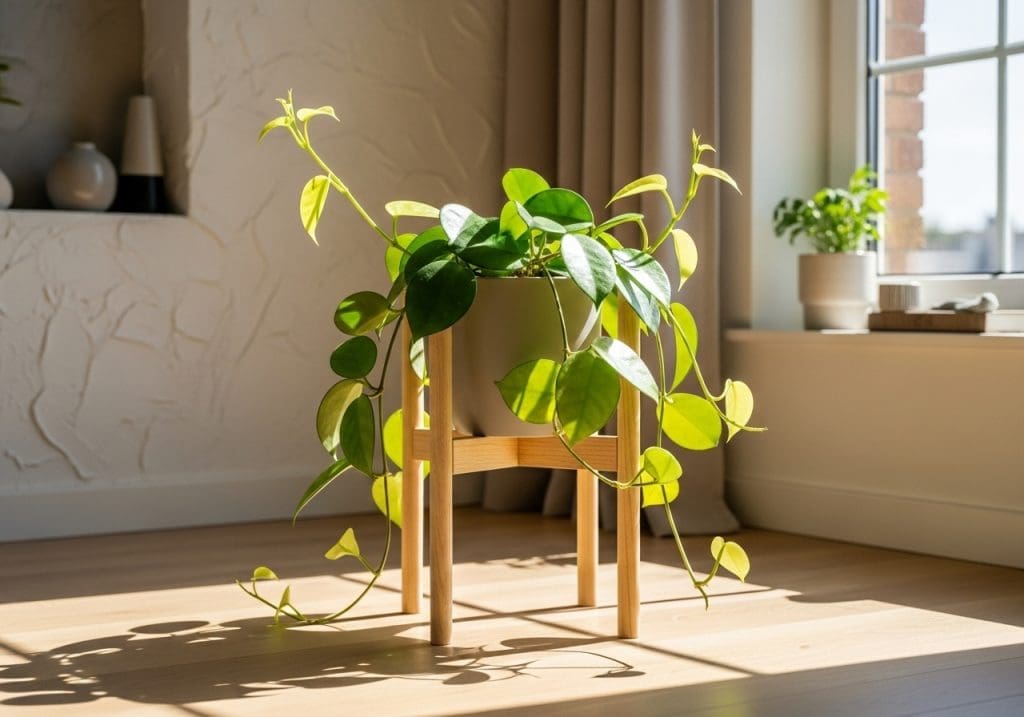
Learning how to propagate rare Hoya plants isn’t just about creating more plants — it’s about preserving and sharing living treasures. Whether you’re in a compact London flat or a sunny Californian loft, the right method, environment, and patience will reward you with healthy new plants and the joy of seeing them thrive.

RarePlantCare Editorial Team produces expert content on rare plants.
Our articles are AI-assisted and human-edited before publication.
We aim to provide practical, evidence-based guides for plant lovers worldwide.
Learn more about our Editorial Policy


